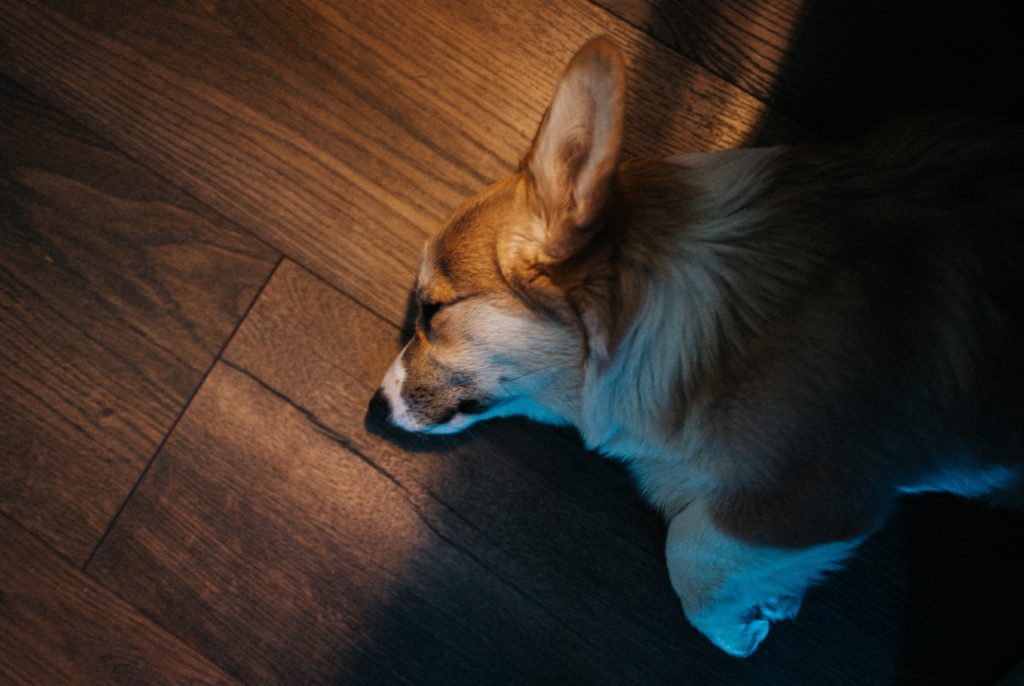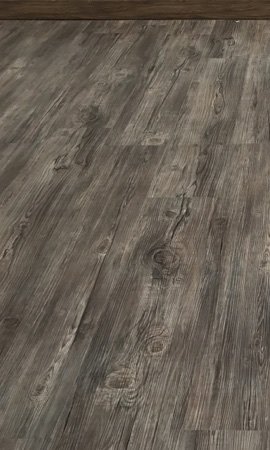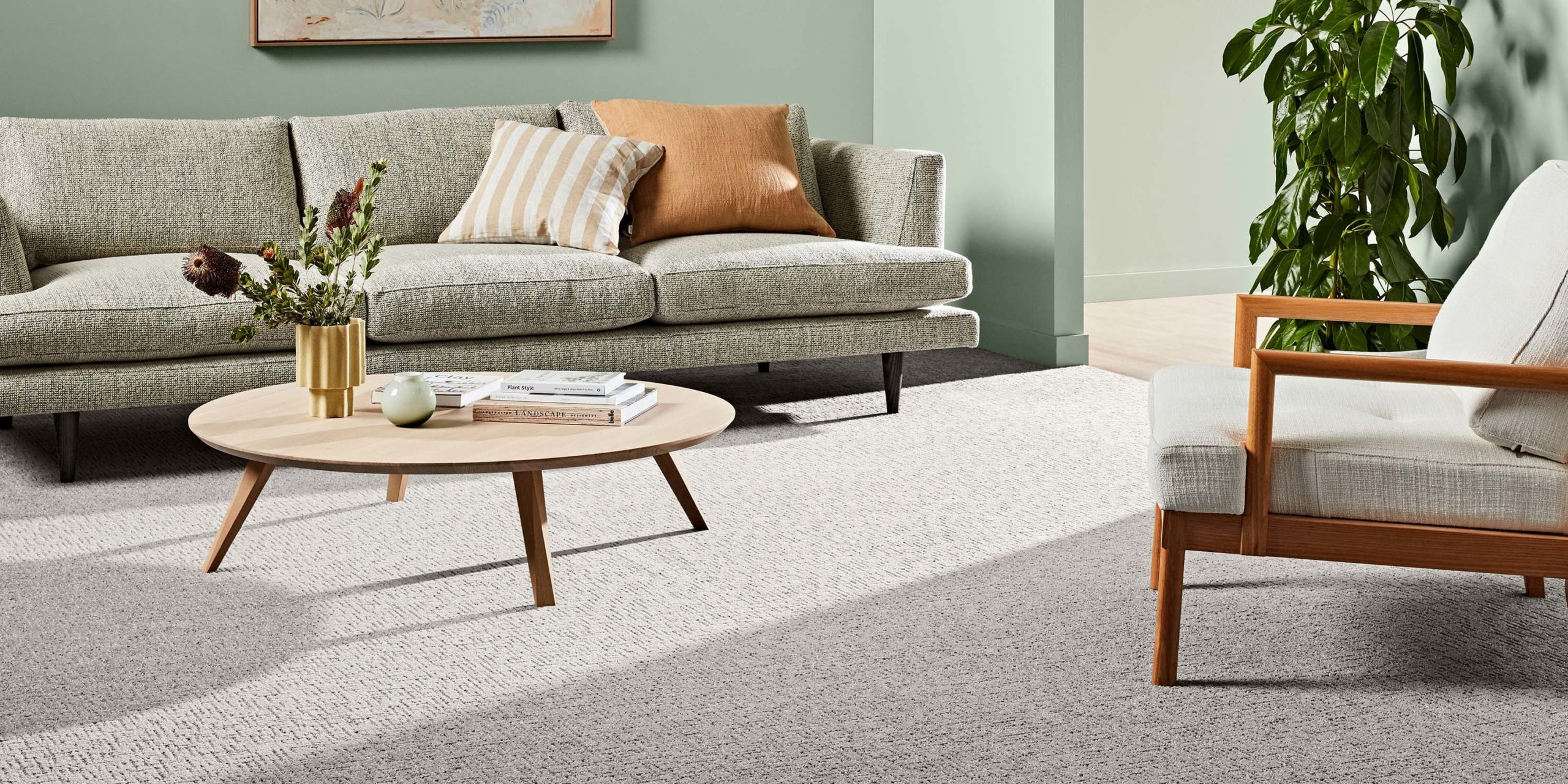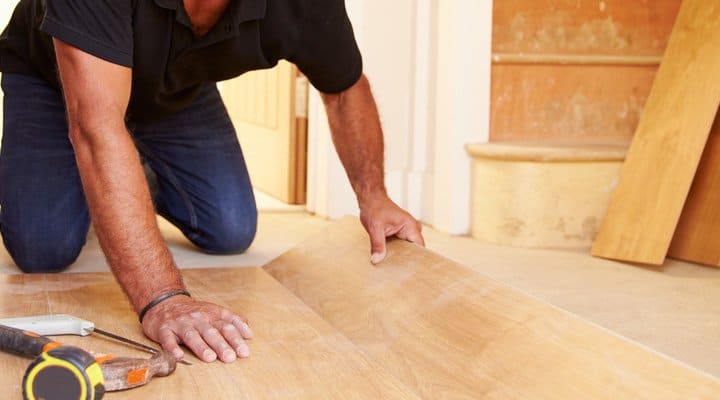

21 Mar Guide to Flooring with Dogs, Cats and other Pets
When you’re choosing your next floor, accounting for the furry part of your family is a very important step! If you’re not careful, pets can cause increased wear and tear on your floors, leading to stains, scratches, and other damage that may be difficult to conceal or remove. This guide will help you choose the floor that is right for both your family and your pets.
What should you be looking for in a pet-friendly floor?


Durability
A pet-friendly floor needs to be able to resist the wear that it accumulates over its lifetime, whilst still looking presentable and stylish. Pets accelerate this wear as a result of increased foot traffic and scratches from any sharp claws or nails they might have, which makes it important to have durable flooring.
Laminate, hybrid and vinyl-plank flooring have the most scratch-resistant and durable surfaces. Oak floors and other natural timber floorings are less durable because they are natural woods that are inherently softer and more scratch resistant in nature, even if they are finished with a protective polyurethane lacquer.
Resistance to moisture, stains and odours
Let’s face it – pets can make quite a mess around the house. For example, if your pet goes outside, they can bring mud, water and other sorts of grime into your house. Any spills, urine or other liquids can also cause permanent and unsightly damage to your floors. As such, your flooring needs to be not only durable but also resistant to moisture, stains and odours.
As such, water-proof and water-resistant flooring may be a better choice for homes with pets. The most suitable options are hybrid flooring, vinyl plank flooring, tiles and laminate floors. Hardwood timber, oak and bamboo flooring are also suitable options, but greater care is required.


Easy cleaning
Along with the durability of your floors, the ease of which your floor can be cleaned is also an important factor for peace-of-mind. In the event that your pet has an accident, you want to be able to clean up any messes quickly and efficiently, leaving time for you to do what you enjoy.
In terms of easy cleaning, the most suitable option ie tiles, then comes hybrid flooring, vinyl flooring, laminate flooring and timber flooring. Carpet is the least suitable option because it’s difficult to clean and pets can sometimes get their claws caught in the carpet threads.
Noise Levels
As your pets jump around your home, they can cause a sizable amount of noise for those downstairs. Harder flooring can cause the sound of footsteps to reverberate around your home (or downstairs), which can be distracting and uncomfortable.
Most quality floors should have noise-transmission mitigation solutions. For upstairs areas or apartment blocks, it is compulsory to install acoustic underlay to reduce noise-transmission to neighbours on the floor below.


Best Pet Friendly Flooring Options
Laminate Flooring
Laminate flooring consists of a durable print layer glued to a particleboard. Due to the strength of this top layer, laminate flooring is an ideal pet-friendly flooring as it can withstand almost any scratches and dents caused by your pets. Additionally, some surface finishes and types of laminate flooring are highly effective at concealing scratches on the surface if they occur.
Laminate flooring is also easy to clean and maintain, and is more inexpensive than options like natural hardwood floors and tiles. However, smooth (glossy) laminate may reflect scratches more and be slippery for your pets.

Hybrid & Vinyl Plank Flooring
Hybrid and vinyl flooring are also inexpensive options for pet-friendly flooring. Not only are they easy to replace and able to be installed almost anywhere, this type of flooring is waterproof and highly resilient against any damage your pet can throw at it. Due to its multiple-layer construction, hybrid and vinyl flooring is both quiet and comfortable for you and your pets. They are also produced with eye-catching designs that are sure to complement the look and feel of your home.
Tile Flooring
Tile flooring is an excellent option if you want to preserve the beauty of your floors for a long time. Due to their hardness and water-proof nature, tile flooring is very scratch resistant and easy to clean. The tile and grout is also good for preventing your pet from losing traction when moving around.
However, tile flooring is also more expensive to install and replace compared to flooring options above, and its surface may be uncomfortably hard and cold, particularly in the winter.
Other Potential Flooring Options
Bamboo Flooring
Bamboo flooring is a suitable option for pets because it is more durable and scratch-resistant than traditional natural hardwood or oak timber floors.
Whilst bamboo flooring has a stylish appearance and made from real bamboo, it is less durable on the surface compared to man-made floors like laminate or hybrid flooring. Thus, it will be more sensitive to sharp nails and claws that can cause unsightly scratches to its surface. Bamboo flooring is also more sensitive to moisture than other options, so care needs to be taken to immediately wipe away spills or accidents.
If you like the look of bamboo flooring, you may opt for lighter colours because they better conceal any scratches that may be incurred. Dark colours are more likely to reflect the light colour scratches that occur on the floor.
Hardwood Timber Flooring
Although natural hardwood flooring can add so much authentic beauty and warmth to your home, it is particularly susceptible to damage from scratches and spills. Hardwood flooring is also more expensive compared to other options.
If you do decide to go with hardwood flooring, you will need many layers of finish (coatings) to prevent scratches and stains, which could make the floor more slippery for your pets. You should also go for harder timbers such as Spotted Gum or Ironbark for increased scratch resistance and durability.

How do I protect my floor?
For your floors:
Clean up spills as soon as possible
The most important part of maintaining your floor is to clean up any accidents as soon as possible. Food spills and other moisture can seep through your floor, causing water damage to the lower layers of your home. In particular, pet urine is acidic and can etch through your floor, which can negatively impact the surface of your floor.


General maintenance
Wiping areas with a damp soapy cloth can help significantly with the upkeep of your floors. Larger stains (as well as grout stains in tiled flooring) can be tackled more aggressively with a spray containing baking soda and white vinegar, which is wiped and rinsed away with water afterward.
Use rugs
Rugs can not only cover up any pre-existing scratches but also act to provide a protective barrier between your pets and your flooring. This is particularly useful on natural timber floors, where rugs can also provide a comfortable place for your pets to relax.

Prevent spills from food and water bowls
If your pet is a messy eater or splashes water when they drink, purchasing a heavier or ‘no-spill’ bowl may be a good option to protect your floors. Bowls that can be anchored to the floor or have a non-slip base will also help to prevent the bowl from being tipped over and spilling its contents.
Use mats at entrances
If your pets like to go outside, you might also wish to place mats at every entrance point, which can act to capture any unwanted material that is brought inside, reducing the need for you to clean your flooring.
If you are looking to learn more about general floor cleaning and maintenance, we have an article on how to clean and maintain flooring.
For your pets:
Trim your pet’s nails
Nail trims are an important part of taking care of your pet, as it helps them to walk comfortably and avoid injury, with the side effect of helping to protect your floor from scratches.


House-train your pet
House-training is an important part of keeping your floors clean, as pets that aren’t potty-trained may wreak havoc on your floors! Some pets may regularly soil themselves in response to particular locations or smells, so it’s important to be aware of your pet’s behaviour.
Wash your pet regularly
Washing your pet regularly helps keep them clean, and minimises the hair that they shed on your floors. This also eliminates the struggle to clean everything else from annoyingly clingy pet hair.
Pay attention to your pet’s health
Making sure that your pets are healthy and in good condition is also a great way for protecting your floors. There could be behavioural and medical reasons underlying any accidents your pet could be experiencing, which can be checked by your vet.
Conclusion
Choosing your next pet-friendly floor doesn’t have to be difficult as long as you remember the needs of your pets. Struggling to make a decision? Our experts at FloorVenue can help you, as we can offer a free consultation so that you make the right choice for your family.




























